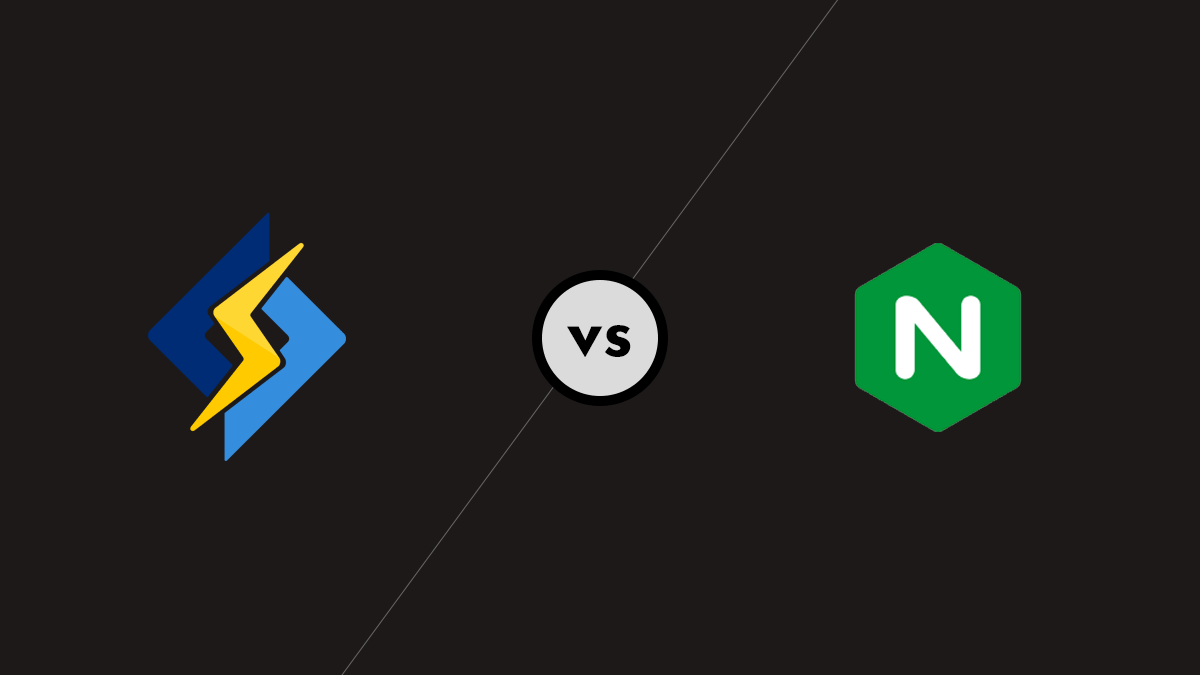
Nginx and Litespeed have carved out a significant presence in the industry, each offering a unique blend of features, performance, and security.
This article will provide provide an in-depth comparison of these two web servers, shedding light on their strengths and weaknesses. You'll also learn that which of them is better for WordPress Sites.
Whether you're a seasoned developer or a business owner seeking to optimize your website, understanding the differences between Nginx and Litespeed can help you make an informed decision that aligns with your specific needs and goals.
Importance of Web Server for Web Performance
Web servers play a pivotal role in web performance. They are the backbone of any website, handling the requests from users and delivering the requested content.
The speed, efficiency, and reliability of a web server directly impact the user experience.
A high-performing web server ensures quick load times, smooth operation, and the ability to handle high traffic loads without crashing or slowing down.
Brief Introduction to Nginx & Litespeed
Nginx and Litespeed are two of the most popular web servers used worldwide. Nginx, an open-source software, is known for its high performance and stability. It uses an event-driven and non-threaded architecture, reducing CPU computation per request, thus significantly reducing client wait time.
On the other hand, Litespeed is renowned for its speed and minimal resource consumption. It uses a unique event-driven architecture, allowing it to serve thousands of clients simultaneously. It's particularly efficient in processing PHP codes, outperforming the average Apache server by up to 40 times.
5 Reasons to Choose Litespeed over Nginx
Superior Performance: Litespeed has consistently shown better performance in benchmark tests, delivering faster transfer rates with less CPU and memory consumption.
Built-in Caching Module: Litespeed comes with a built-in caching module known as LiteSpeed Cache (LSCache), which accelerates dynamic content.
Better Security: Both Litespeed and Nginx support ModSecurity, an open-source Web Application Firewall (WAF). However, Litespeed can utilize ModSecurity without compromising site performance.
Ease of Apache Migration: Litespeed works well with Apache migration, understanding all Apache config files effectively, saving time and effort.
Efficient Resource Utilization: Litespeed can serve thousands of clients simultaneously with minimal resource consumption, making it a cost-effective choice for high-traffic websites.
5 Reasons to Choose Nginx over Litespeed
Open Source: Nginx is open-source software, making it a more flexible and customizable option for developers.
Stability: Nginx is known for its stability, delivering consistent performance even under heavy loads.
Wide Adoption: Nginx is widely adopted and has a large community of users, which can be beneficial for troubleshooting and support.
Efficient Static Content Handling: Nginx is very efficient at serving static content, which can improve the performance of websites with a lot of static content.
Reverse Proxy Capabilities: Nginx can also be used as a reverse proxy, load balancer, or HTTP cache, providing additional flexibility.
Which is Better for WordPress
When it comes to WordPress, a platform used by millions of websites worldwide, the choice between Nginx and Litespeed becomes particularly significant. Litespeed appears to have an edge in this context due to several factors.
Firstly, Litespeed delivers faster performance for WordPress sites. This is particularly noticeable for WordPress homepage requests, where Litespeed's speed outshines that of Nginx. This speed advantage can significantly enhance user experience, leading to lower bounce rates and higher user engagement.
Secondly, Litespeed's built-in caching module, LSCache, is specifically optimized for WordPress. Caching is a technique that stores a version of a page in a ready-to-go state, so when a user requests that page, it loads faster. LSCache's WordPress-specific optimizations provide superior speed and performance, making WordPress sites run more smoothly.
Moreover, Litespeed offers robust security features that are beneficial for WordPress sites. It supports ModSecurity, an open-source Web Application Firewall (WAF), without compromising site performance. This means WordPress sites running on Litespeed are better equipped to handle security threats.
Lastly, Litespeed's ease of Apache migration is another advantage for WordPress users. Many WordPress sites initially start on Apache due to its popularity and ease of use. As these sites grow and require better performance, migrating to Litespeed becomes an attractive option due to its compatibility with Apache configuration files.
In conclusion, while both Nginx and Litespeed have their merits, Litespeed's specific optimizations for WordPress, coupled with its superior speed and security, make it a compelling choice for WordPress sites.
Conclusion
Both Nginx and Litespeed have their strengths and are excellent choices depending on your specific needs.
Litespeed seems to have an edge over Nginx in several areas, including performance, security, and ease of Apache migration. However, Nginx's open-source nature, stability, and wide adoption make it a strong contender. For WordPress sites, Litespeed's specific optimizations make it a compelling choice.
Ultimately, the choice between Nginx and Litespeed will depend on your specific feature requirements.
